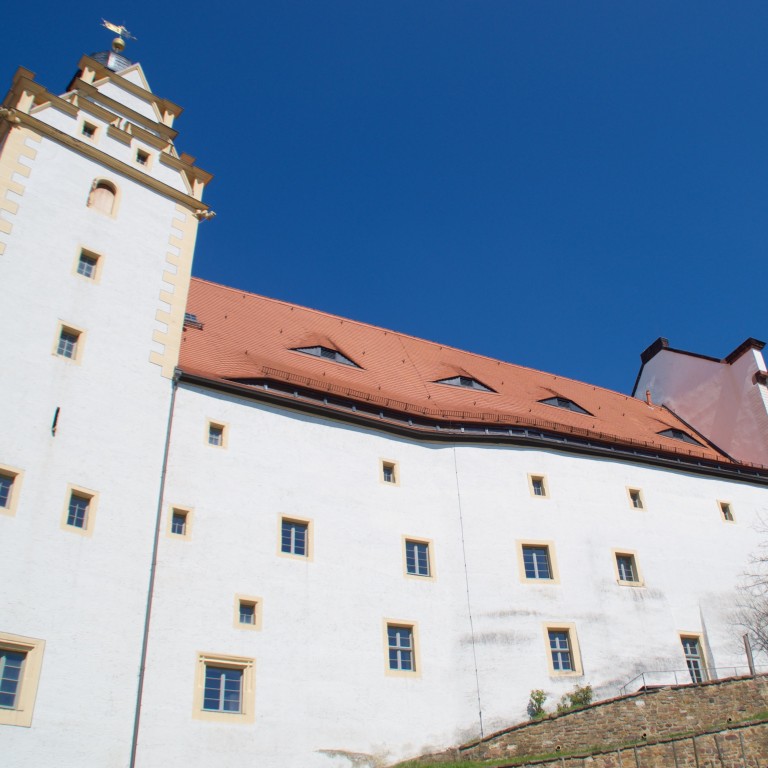
In Colditz country: the castles of Saxony, eastern Germany are historic, spectacular and remarkably free of visitors
- Soaring vaulted roofs, pointed towers, forbidding walls – the castles of Saxony were a mix of country residences, pleasure palaces and seats of power
- Colditz is the best known, as a former World War II jail, but others are full of stories – about Saxon kings such as Frederick the Belligerent – and surprises
Not even the thick walls of the 15th-century Schloss Wurzen can keep out the morning birdsong, which seems particularly loud in this quiet corner of Saxony, near Leipzig in eastern Germany. It acts as a call to an early breakfast in the dining room of the castle turned hotel.
Its twin-towered, moated bulk seems more suited to a robber baron than to the bishop for whom it was built, but today it is an appropriate base from which to reach other castles dotting the high points of this quiet corner of Germany close to the Czech and Polish borders – little visited yet architecturally spectacular and full of surprises.
The receptionist is amused when I ask what time I should set off to avoid the traffic. It really doesn’t matter, he says, and indeed the winding country roads to Barockschloss Delitzsch, half an hour northwest, through fields of neon-yellow rape and steep-roofed Saxon villages, have only light traffic.
When, across the dry moat, the heavy wooden doors beneath a carved and painted stone arch swing open, I am the only waiting visitor.
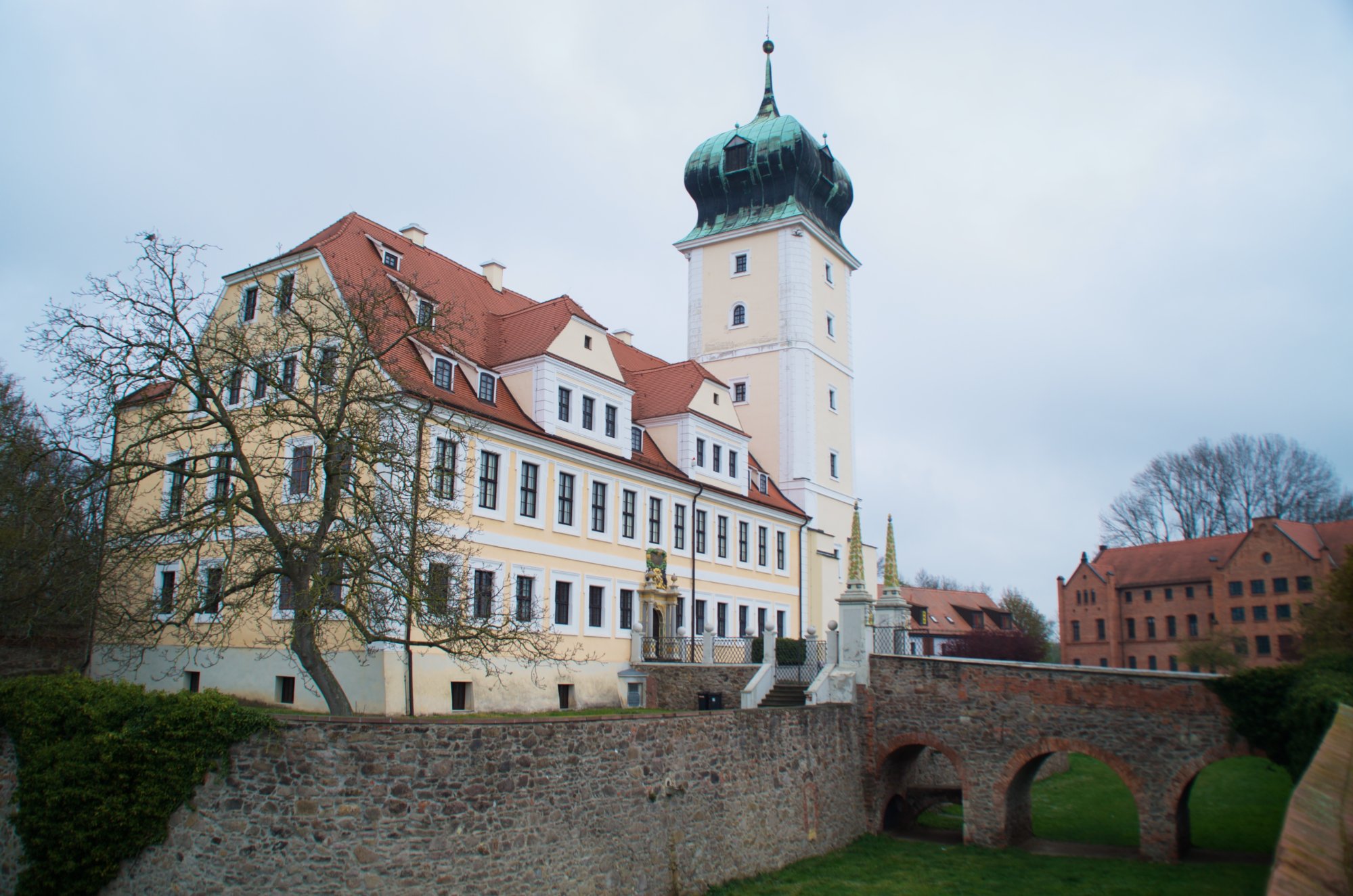
The castle retains a striking, medieval, onion-domed tower but is otherwise a substantial late-17th country house, once home for widows of Saxon monarchs such as Christiana of Saxe-Merseburg (1634-1701), who long survived a prince 19 years her senior.
Her focus was inward, her prayer chamber bigger then her bedroom, but she did not live without comforts, including a lace-trimmed four-poster bed, tapestried wallpaper, and Delft chinoiserie in niches over a vast fireplace. It is all grand, yet very human.
The climb up a spiralling iron staircase to the top of the tower, past exhibitions concerning historic local products such as chocolate, rat poison and steam engines, leads to views across ornamental gardens to the roofs and spires of Delitzsch’s old town.
The castle also contains a museum of puppetry, with a slightly unnerving life-size wooden boy peering, Pinocchio-like, from a sedan chair.
There are only slightly more visitors at Torgau’s sprawling Schloss Hartenfels, towering over the River Elbe and once the residence of the Electors of Saxony (later also kings of Poland), about an hour’s meandering drive to the east of Delitzsch.
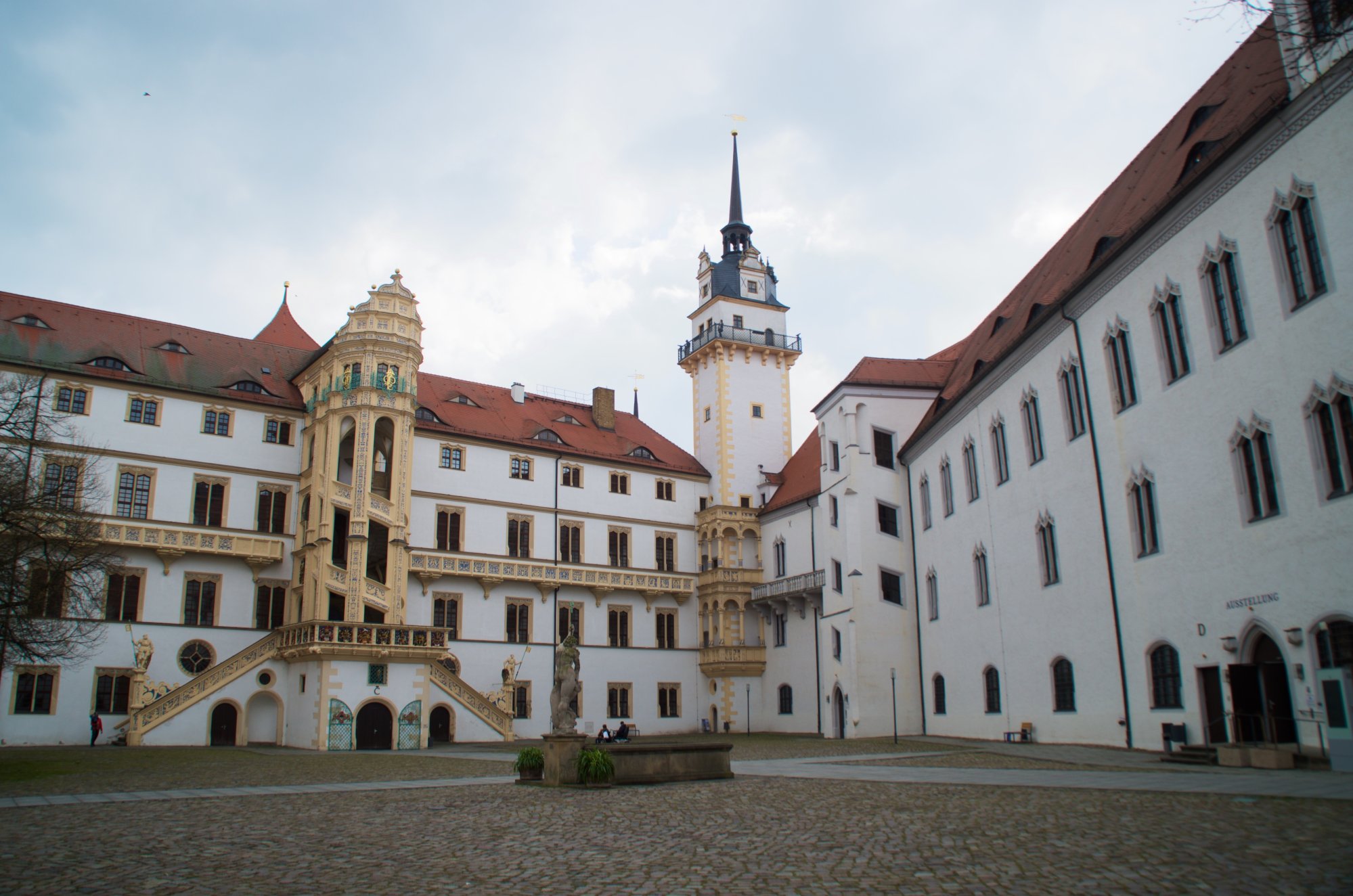
Its linked Renaissance piles in varying styles are still partly in use as government offices and surround a vast courtyard. Its rooms contain ancient armour, models of guardsmen in baggy breeches surely entirely impractical for any sort of fighting, slender swords and primitive rifles inlaid with ivory or incised with patterns of fruit and hunting dogs.
Selfie central is a highly decorated external staircase, leading up through a balcony lined with gargoyle waterspouts and painted coats of arms.
Stone was never rendered so sinuous as on the stairway’s central column, more vegetable than mineral, the overlapping curved treads of the steps looking like the ribbed patterns left in sand after the tide has ebbed.

Inside, digital technology has animated a Cranach portrait of strikingly redheaded former resident, Sibylle von Jülich-Kleve-Berg, who married the Elector of Saxony in 1527.
Her diary entries have been quite brilliantly voiced for an interior son et lumière, with a choice of English or German, recounting daily life with 250 servants.
For students of European history, the light and airy chapel, begun in 1543, is of more significance, it being the first purpose-built Protestant place of worship. Martin Luther, scourge of the Catholic Church and igniter of the Reformation, had a hand in designing it.
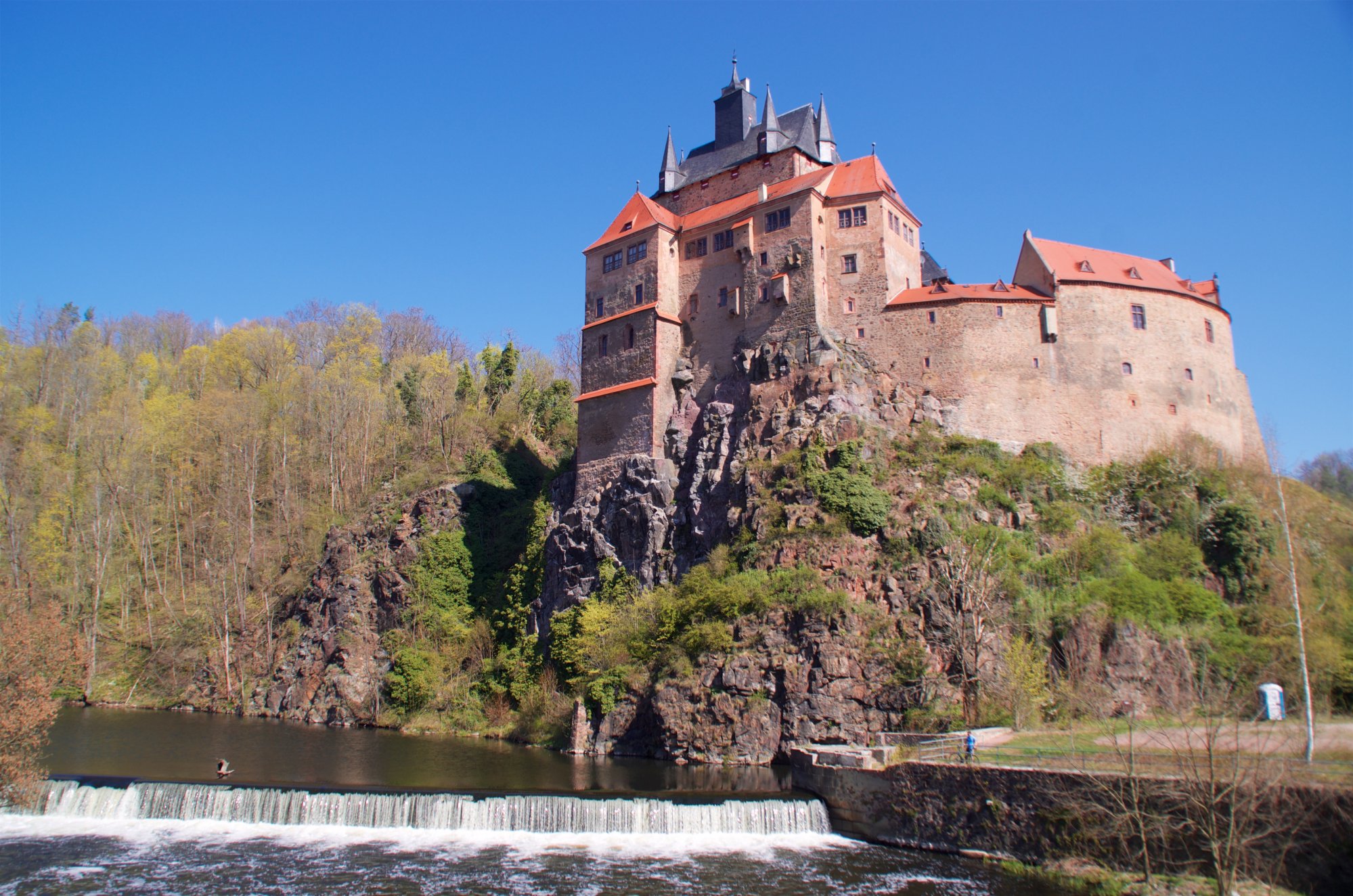
The next day, an hour south of Wurzen, Burg Kriebstein – compact, solid, Gothic and reached up what must be the steepest road in Saxony – seems to grow directly from a sheer cliff over the River Zschopau.
This was a true fortress, its grim and blank-walled 14th-century base given a decorative and more homely topping only in the 17th century.
Inside, it is everyone’s idea of a proper castle, with pointed vaulting and passages and stairs leading off at odd angles, reflecting the architecture’s adaptation to the shape of the rock on which it sits.
Planning a big family holiday? 4 of the best hotels in Europe for all ages
Routes around the castle have a disconcerting tendency to return to the starting point, but from a different direction. There is plenty of original furniture, different rooms reflecting the tastes of different periods, and the walls and ceiling of the chapel retain some of Germany’s finest late-medieval murals, gorgeous with flowers and religious scenes.
In 1415, a knight called Staupitz seized the castle, and was then besieged by the wonderfully named Frederick the Belligerent. Staupitz’s wife begged Frederick to allow the castle’s women to leave, carrying only their most precious possessions. The margrave agreed, but was taken aback when, next morning, the gates opened and the women staggered out carrying their husbands.
As a result of this entertaining effrontery, Staupitz was allowed to live.
Colditz is famous everywhere except in Germany
I can often see slender spires and toothy towers pricking the skies long before I reach a settlement, as is the case with Schloss Rochlitz, only 20km further. It once dominated a ford across the Zwickauer Mulde river where two trade routes met.
The castle’s gate is guarded by two mismatched towers, capped with what look like wizards’ hats and still showing evidence of cannonball damage.
In the 15th century, this also served the Electors of Saxony as a residence, and both Frederick the Wise and John the Steadfast received their knightly training here. The walls of the schoolroom are etched with centuries-old graffiti revealing that boys had the same preoccupations then as now.

Most castles have displays of elaborate and often highly decorated armour, as well as weaponry of various eras, including swords it would take two hands to lift, but Rochlitz’s displays include items discovered during its renovation such as something resembling a tommy gun and a collection of mummified rats.
A short distance to the north is Schloss Colditz, where the talk is no longer of Renaissance rulers or widows in retirement, but of the 20th century – although the oldest mention of the castle dates from 1036 – when it was not about keeping enemies out, but keeping them in.
The castle became a hospital after the end of the second world war, and began opening to the public in 1996, whereupon its managers were astounded to see visitors from all over the world appear asking questions about escape attempts.

“Colditz,” says a guide, “is famous everywhere except in Germany.”
Offlag IV C, as it was known during the war, was set up far from Germany’s borders to house the most senior captured enemy officers and the most inveterate escapees of all ranks, and as a result became a kind of escape academy.
Prisoners of different nationalities shared knowledge and techniques, and studied the experiences of those escapees who had been caught and returned. The Germans also studied each escape, interrogating and photographing those recaptured in whatever makeshift costume they had assembled, and continuously improving security and sharing their discoveries with other prisons.
The excellently narrated Escape Tour goes deep inside the castle to reveal that it became riddled with tunnels, and had several secret radio rooms, one only recently rediscovered. A climb up to one loft shows how an escape glider was constructed there without the guards ever discovering it.
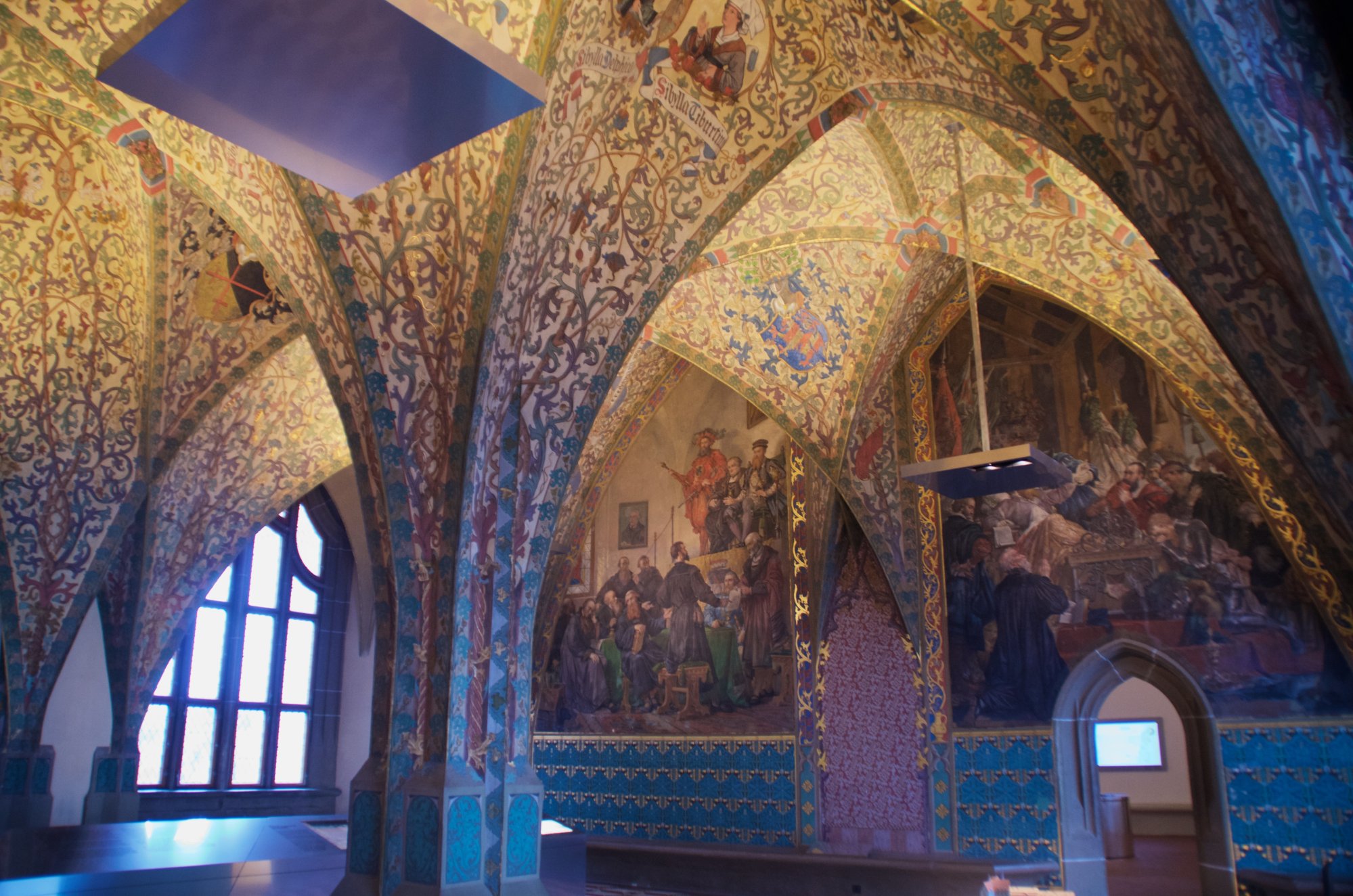
Although some castles offer little in English – “We don’t get many English-speaking visitors” is the usual excuse – Albrechtsburg in Meissen, billed as Germany’s oldest castle and more a hilltop village, offers a multilingual, hi-tech touchpad capable of populating its rooms with virtual reality figures at bygone events.
But there is enough to attract the eye without its assistance: halls with soaring roofs on complex arches painted with intricate patterns; murals of historical events, and; life-size solemn statues of key figures from the ruling House of Wettin, including Frederick the Belligerent, besieger of Kriebstein.
It is a luxurious warren, and in every way a fairy-tale idea of a castle that might easily have been a set for Lord of the Rings.
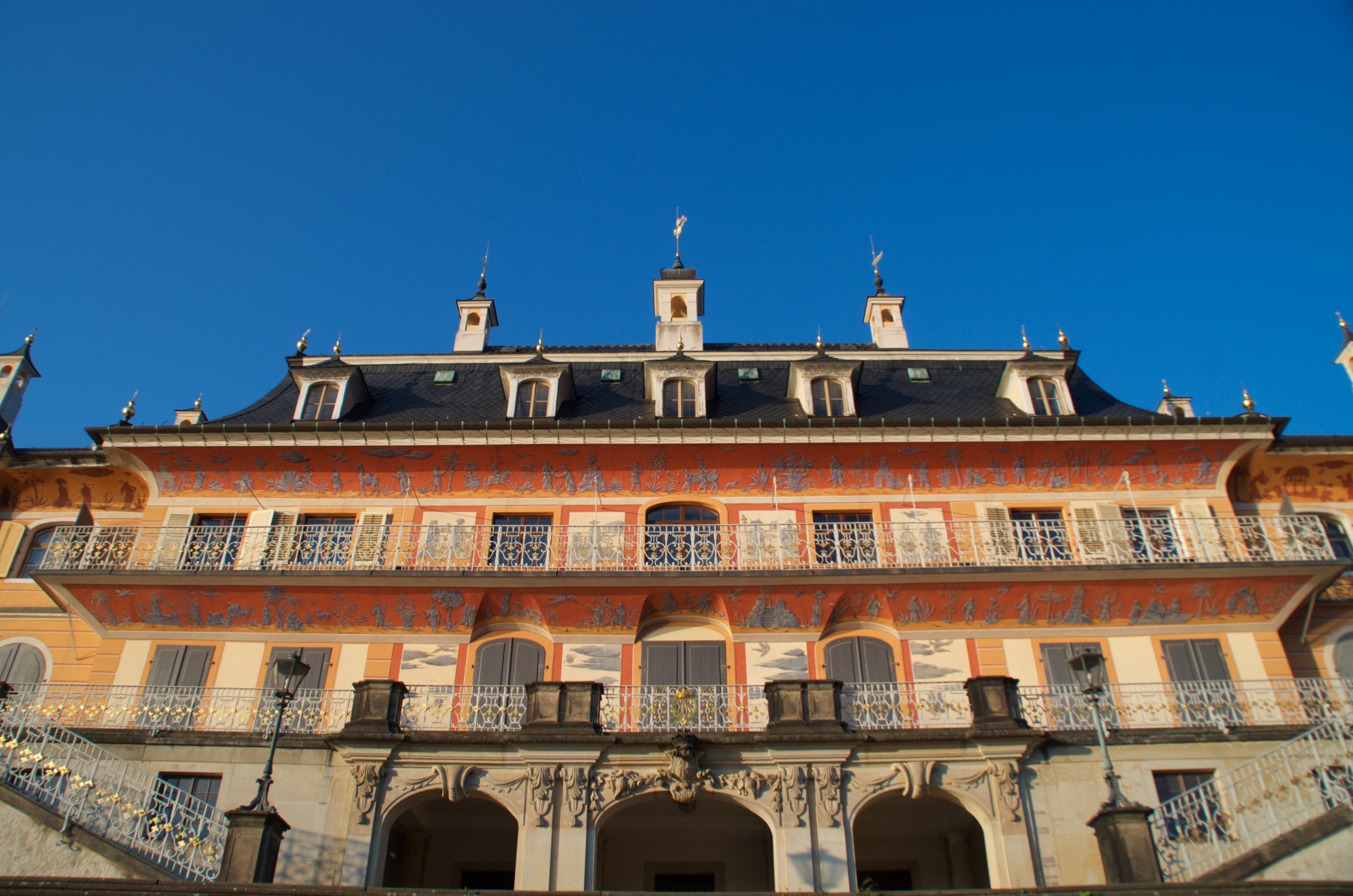
The drive along one bank of the torpid Elbe towards Schloss Pillnitz, on the outskirts of Dresden, is particularly pretty and, when we reach the castle, swallows are flying sorties over the river while the warm late afternoon light, shining through a treetop heronry, makes the gilding of the castle’s decorations gleam.
Schloss Pillnitz was the 18th-century pleasure palace of Augustus the Strong, influenced by Versailles and built principally for parties, but our bedroom in the Schlosshotel annexe is solidly furnished and quiet, although birdsong pours in through the open window.
In the morning, the multi-courtyarded residence, with its ornate gardens, proves to be covered in murals of pagodas, pavilions and Chinese robed figures, with the surprising inclusion of a giraffe; China was fashionable as an idea at the time, but little understood.

One interior room features panoramic wall coverings with hunting scenes and a dragon boat regatta, imported from Canton in the late 18th century.
Extensive kitchens are lined with copperware, and upstairs are displays of backgammon and other games, included mahjong. Large swings for ladies were once suspended between the pillars, allowing for intimacies with the cavaliers doing the pushing.
Only a handful of people join me to view the once-bustling ballrooms and parlours.
And there are still a half a dozen other nearby castles to see.

